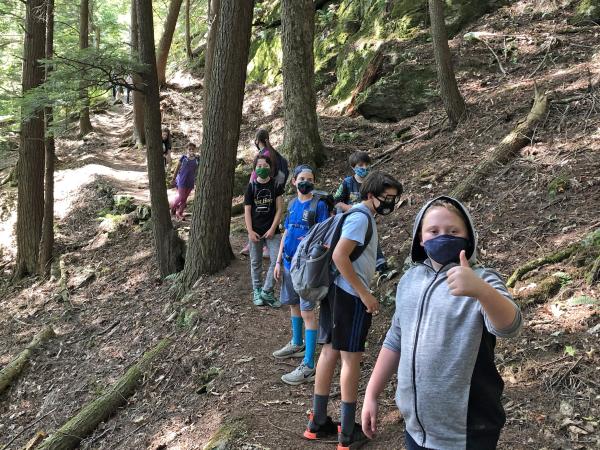Love this mnemonic! What a beautiful lens to see children's reality, and the social and emotional needs that must take priority right now.
The Five Vow(el)s of Learning Outside the Classroom
Place-based education (PBE) has long advocated for learning beyond the school building as a way to
“immerse[s] students in local heritage, cultures, landscapes, opportunities and experiences, using these as a foundation for the study of language arts, mathematics, social studies, science and other subjects across the curriculum. PBE emphasizes learning through participation in service projects for the local school and/or community.” (Promise of Place).
PBE encourages students to take the knowledge and skills gained in school and apply them “in the field,” where situations are less controlled, but can offer lessons that can’t be taught in the confines of the classroom. Like in drivers education, students need lots of time behind the wheel with a knowledgeable guide (a teacher, parent or other adult mentors), learning how to navigate their neighborhoods. With this practice, they will grow more prepared to handle the twists and turns of real life on their own, especially as the roads become busier, less familiar, and more complex.
A little scary to let students take the wheel? Yes! But by remembering your grammar school vowels (A, E, I, O, U!), you can prepare yourself and your students for an exciting learning adventure, well worth the investment of time and energy!
Appreciation
Helping students find joy and wonder in the content you’re teaching, in their communities, or with classmates online, can collectively help counter the social emotional challenges imposed by the pandemic’s restrictions. (An attitude of gratitude, afterall, is a key component of happiness.) You can model this yourself. Research has shown that teachers who are enthusiastic about -- and appreciate -- the topics they are teaching, engage students to a much greater degree.
How will I build in enough time for observation, reflection and creative expression to help my students discover the “extraordinary in the ordinary” of their place? How will my students thank those who have contributed to their learning?
Expectations
Outside the classroom, there's inherently more competition for a student's attention, be it a buzzing insect, a loud siren, or click bait. This is life! Most of us struggle to focus on the task at hand. Clarifying expectations before these added distractions are in play can help students learn to independently manage their time and attention as they engage in the proposed learning path. This skill obviously isn’t mastered overnight. This past spring shed some light on what students can reasonably accomplish outside the classroom.
How will I make instructions easily accessible and clear so that students can successfully wayfind on their own? How will I scaffold the learning, so that students feel challenged yet not overwhelmed as they practice in their place?
Innovation
In addition to its distractions, learning outside the classroom is often messy and unpredictable. (Contrast it with school laboratories, which were created specifically so that students could safely experiment within simplified and controlled environments.) Challenges such as navigating a muddy schoolyard, dealing with unreliable WiFi, or encouraging mask wearing in the community can be frustrating for students, and they cannot turn to lab manual instructions! However, with the right supports in place to facilitate research, creative-thinking, and persistent problem-solving, students can learn life-long innovation skills.
What strategies will I practice with students to help them identify potential complications or obstacles to their work and generate relevant solutions? What checkpoints and interventions will I use to support students if they get stuck, helping them re-engage in figuring out how to move forward?
Organization
Unlike schools, outdoor environments are not specifically designed for students, requiring different preparations. Where will students go to the bathroom? How will they protect themselves from ticks? Will they have access to food and water, sun protection, a place to sit, or their daily medications? At home, what schedules and technology need to be in place? If students are asked to venture into their community, what contacts do they need to have? What transportation will they use? The more prepared students are, the more confident and open they will be to learning.
How will I co-plan with my students to make sure we have the resources needed for learning and doing outside the classroom? How will I increase their responsibilities over the school year so that they become more independent planning and securing what they need?
Usefulness
Finally, it is so easy for students (and the rest of us!) to feel helpless in this time of a pandemic, entrenched social injustices, partisan politics, and climate change. Learning outside the classroom can give students a chance to contribute to the well being of their place, stretching and developing their sense of agency. If assignments are directed at addressing a real need in a student’s home, nearby natural area, or community, all your students will learn that they can make a difference.
How will I help students figure out how they can be a part of making their local eco- and social systems healthier? How will I design this learning with students to help them assess what is working, what is not, and how to apply that new understanding toward positive change?
OK, time to rev our engines as we begin to prepare our students for the road, since it is clear this road is likely to continue to have some unpredictable detours that we cannot control!






